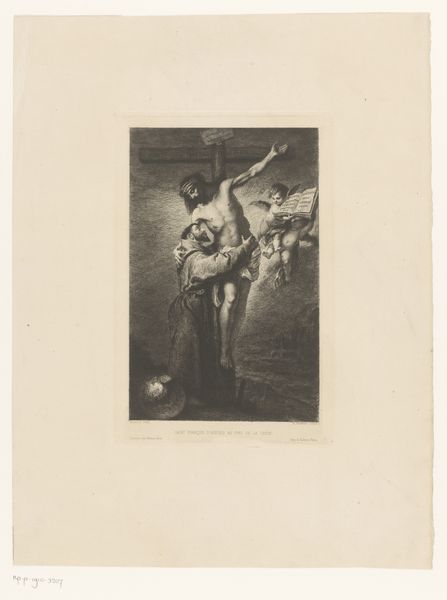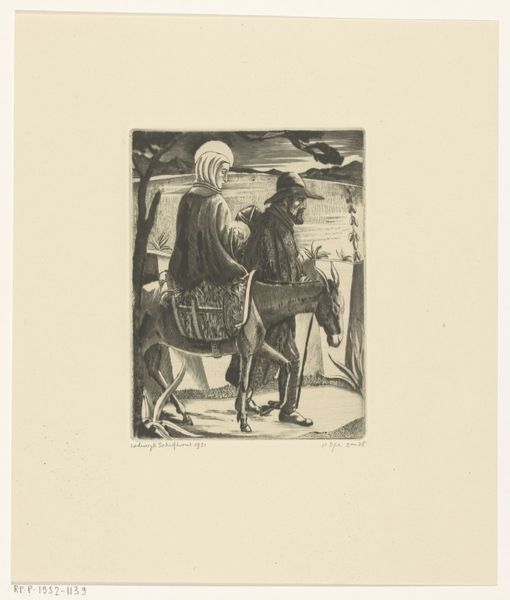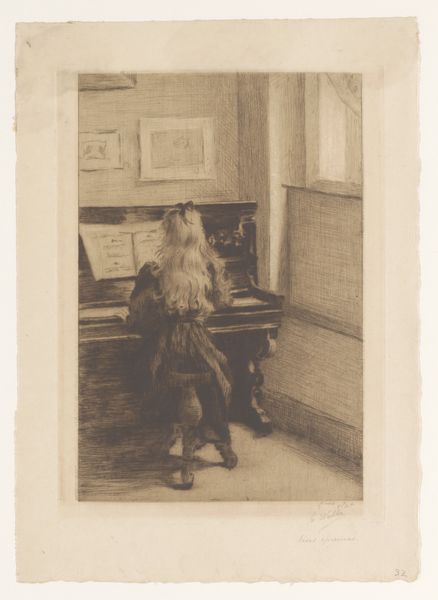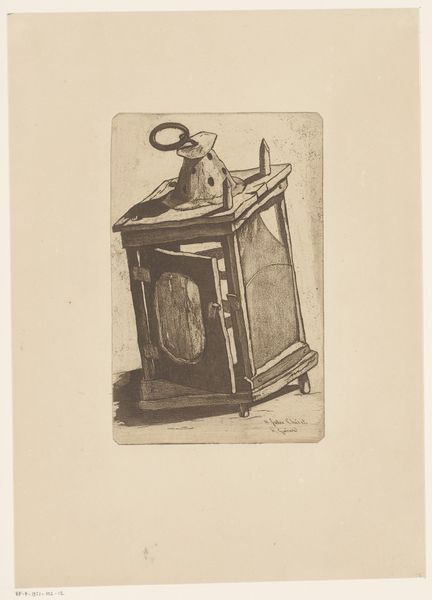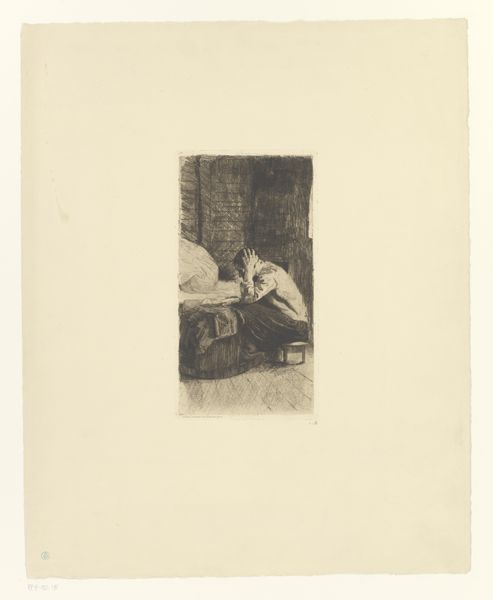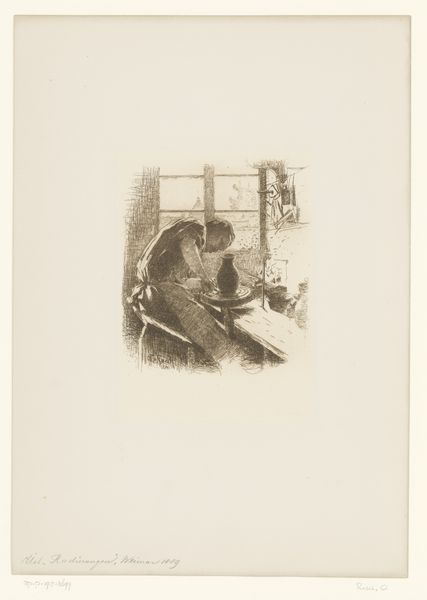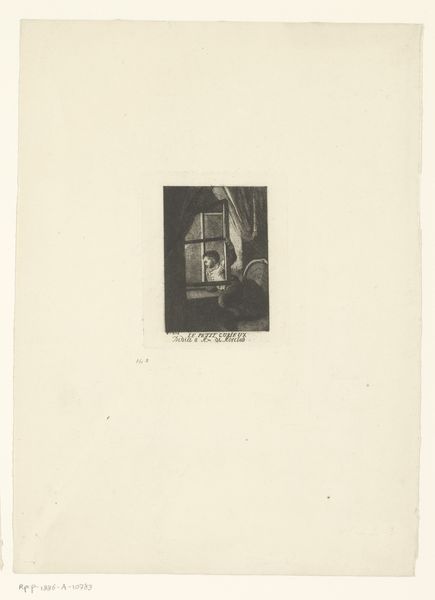
print, etching, intaglio
#
portrait
# print
#
etching
#
intaglio
#
figuration
#
symbolism
#
realism
Dimensions: height 298 mm, width 200 mm
Copyright: Rijks Museum: Open Domain
Editor: This is "Father of the Artist" created in 1913 by Hans Nicolai Aksel Hansen. It’s an intaglio etching printed on paper. I’m struck by the intimacy of this portrait, the domestic setting with the cat, and the figure's focused posture. How do you see this piece fitting into its time? Curator: It's fascinating how Hansen frames his father not just as a paternal figure, but as an intellectual immersed in his own world. Notice the prominent printing press in the background, suggesting the socio-political context of accessible information and the burgeoning print culture of the early 20th century. To whom do you think this image speaks, and what purpose do you imagine it served? Editor: I guess I see it as a private memorial, maybe for family and close friends. I noticed it says, "In memory of Carl Jorgen Hansen, my father." The symbolism gives it a personal quality that sets it apart from more public-facing art of the time. Curator: Precisely. The inscription makes its intention explicit, and reframes how we perceive this genre. The artist created a piece intended as a memorial in contrast to the monumental, public commemorative sculptures popping up across Europe during the same period. This hints at how Hansen understood the private sphere as a potent site of memory and mourning. Do you think this artwork offers a contrasting view of family compared to other depictions from this era? Editor: Definitely. It shows the sitter not grandly, but working, thoughtful and with his cat! Thank you for drawing attention to the historical themes of public versus private commemoration, and Hansen’s unique interpretation. Curator: My pleasure. Looking closely at works like this etching reminds us how art often operates within, and sometimes against, prevailing socio-political trends.
Comments
No comments
Be the first to comment and join the conversation on the ultimate creative platform.

